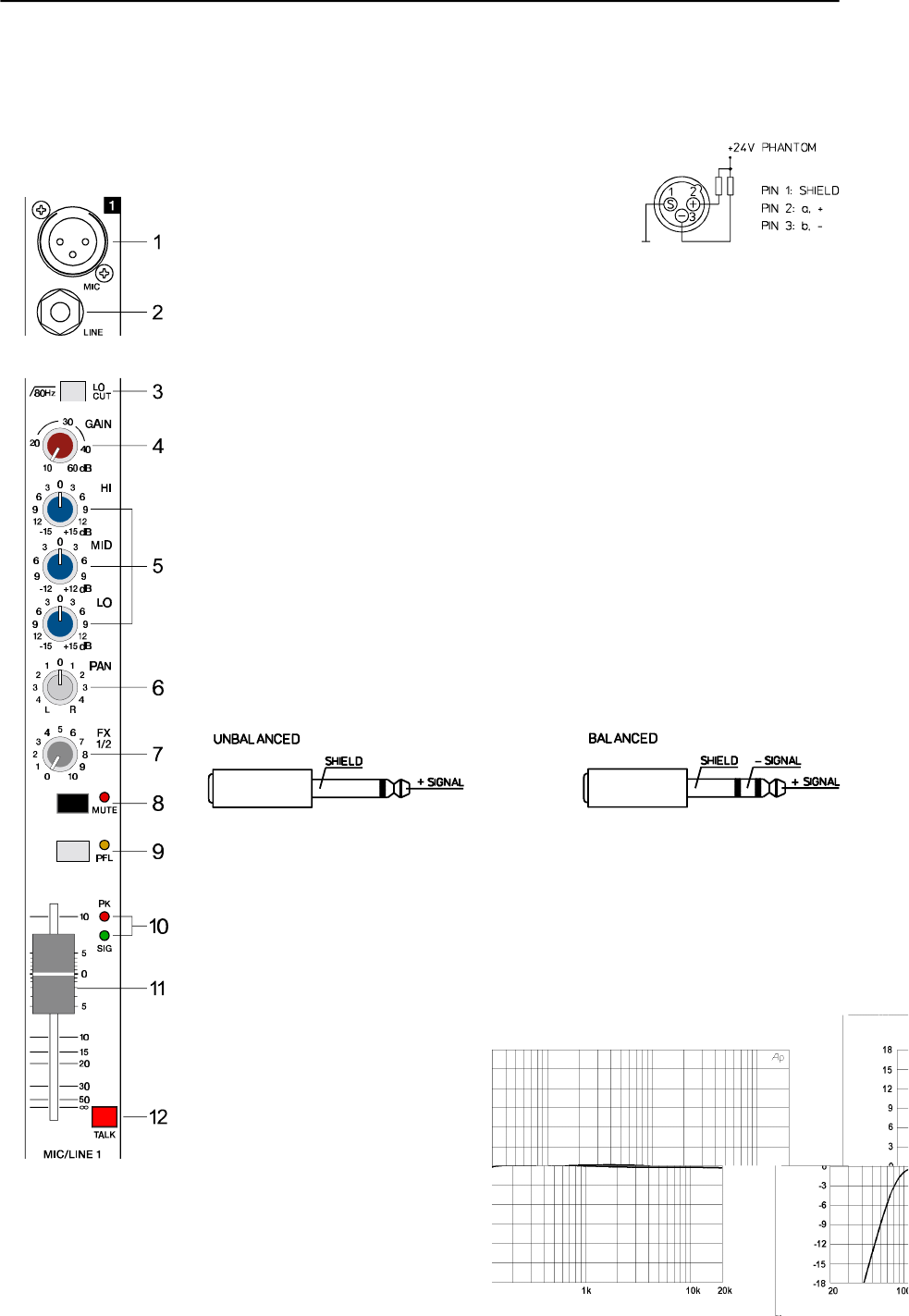
1. MIC
Electronically balanced XLR-type inputs (identical to the ones found on major studio and
live sound mixing consoles) for connecting low-impedance microphones. The input stage
provides extremely low noise and low hum signal processing at an outstandingly low
distortion rate (<0.002% typically) even in the high frequency range. Generally, any type of
microphone can be connected as long as its pin assignment
is in accordance with the diagram shown aside. Connecting
condenser-type microphones is no problem. In that case the
connected microphone gets its power supply (+24V) directly
from the mixer. So, battery replacement belongs to the past.
Using dynamic and condenser microphones together on these
inputs is generally possible. Nevertheless, please make sure to consider the owner’s
manual of the employed microphones. The MIC-inputs are capable of handling levels in the
range between -60dBu ... + 11dBu; depending on the setting of the corresponding gain
control. Because of their design, which is especially matched for connecting low-impedance
microphones as well as their phantom power capability these XLR-inputs are not suitable
for the connection of additional mixing consoles, FX-units, keyboard instruments, or other
electronic gear. When connecting this kind of equipment, please utilize the LINE-inputs.
2. LINE
Electronically balanced inputs for the connection of electronic instruments, such as
keyboards, drum computers, E-guitars and E-basses with an active output, as well as all
other high level signal sources, like additional mixers, FX units, CD player, etc. The
LINE-inputs have been designed to handle levels in the range between -40dBu … + 30dBu.
Connecting balanced or unbalanced signal sources is equally possible using monaural or
stereo phone plugs, with their pin-assignment matching the diagram. If the device that is
going to be connected is furnished with a balanced output stage, using balanced cables
with stereo phone plugs is certainly preferable. This type of connection is greatly insensitive
to the induction of external noise or HF interference.
Do not connect signal sources to a channel’s MIC and the LINE inputs at the same time,
since the signals cause mutual interference, which results in level reduction.
When connecting signal sources, please make sure that the corresponding channel
faders or at least the master faders are at their minimum settings. This will save
yourself, your audience, and the equipment from extensive wear from unpleasant
plug-in noise.
3. LO CUT 80Hz
The LO CUT-switch allows muting frequen-
cies below 80 Hz by 18dB per octave.
Especially for microphone applications
using the LO CUT filter is good advice,
since it efficiently suppresses popping so-
unds and rumbling noise as well as low-fre-
quency feedback. Additionally, in most
cases activating the LO CUT filter allows
boosting the bass, without having the un-
wanted “booming”.
INPUT/MONO
26


















